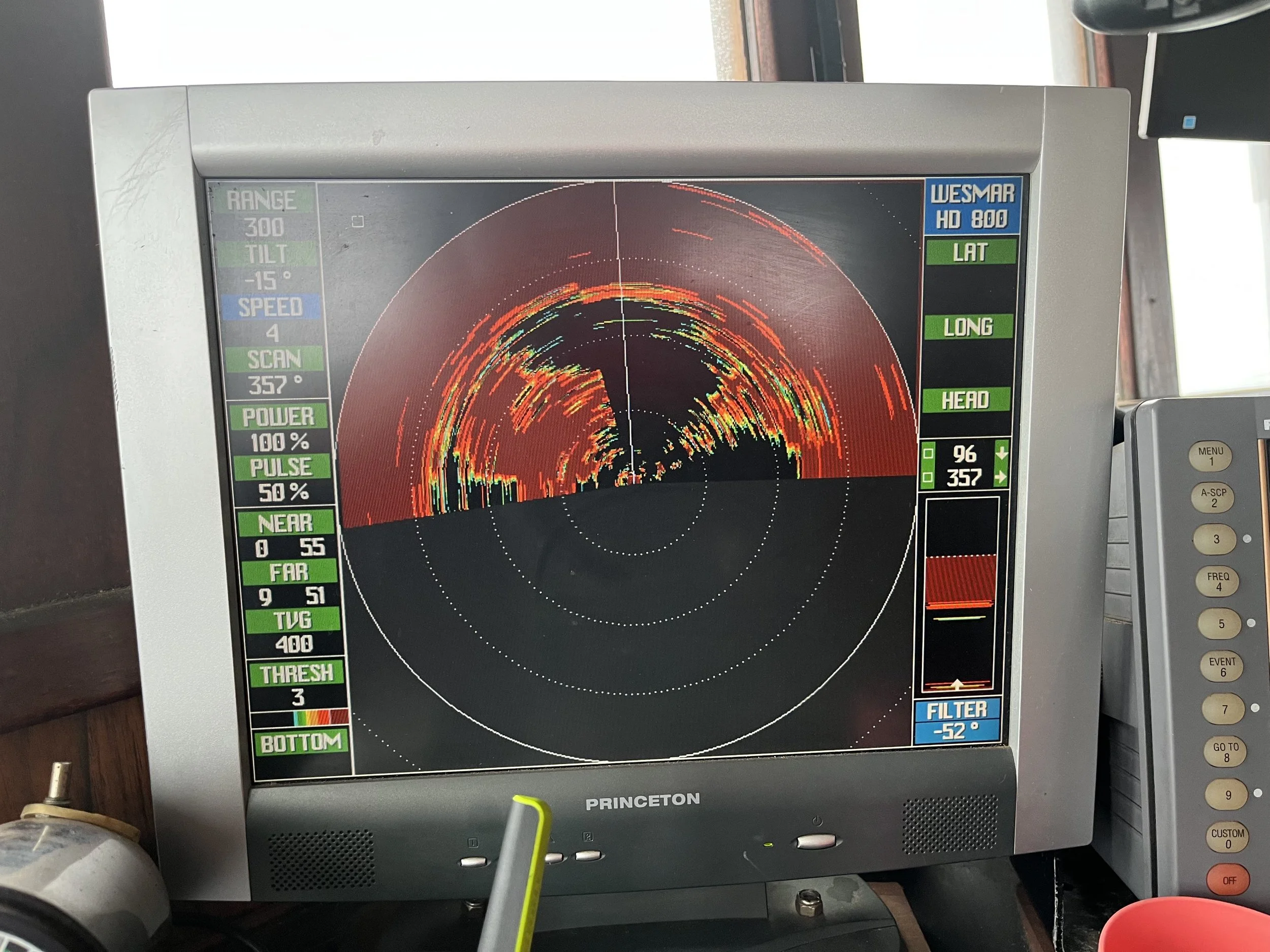
SK GRANT - SARDINE DYNAMICS
Investigating Seasonal Nearshore Dynamics of Pacific Sardine (Sardinops sagax) in California.
A. ABSTRACT
PROJECT SUMMARY
“Pacific sardine is one of the top ten highest valued commercial fisheries in California.”1 But declining stock assessments precipitated closure of the directed sardine fishery in 2015. In 2019, “northern” sardines were declared “overfished,” curtailing the allowed incidental catch rate. This also curtailed fishing for species that school with sardines, inflicting serious impacts on industry.
Stock assessment scientists hypothesize two sardine stocks on the West Coast: northern (NSP) and southern (SSP), separated by 16.7°C sea temperature (SST). The Pacific Fishery Management Council (PFMC) manages only the ‘cold water’ NSP, but counts all sardines landed in California as NSP regardless of the SST.
Stock assessments for NSP based on annual NOAA Acoustic Trawl (AT) surveys now omit sardines estimated to be in water above 16.7° C SST. A report2 also noted that assessments excluding the nearshore area would be negatively biased. To address this, NOAA and industry have initiated a collaborative nearshore survey using fishing boats to expand acoustic and biological sampling. However, aerial surveys and California fishermen have reported thousands of tons of sardines yearlong inshore of NOAA’s summer surveys, questioning NMFS’s declaration of NSP sardines as overfished and the use of 16.7°C to separate NSP from SSP.
The goal of this project is to collect and analyze historical and current biological and landings data yearlong, bi-monthly observations and monthly samples from purse seine fishing and live bait catches, to test the hypothesis that NSP and SSP sardines, particularly sardines inshore of NOAA surveys, can be accurately separated by their association with 16.7°C SST using morphological (e.g. length, weight, age, vertebral count) and biological metrics. The outcome will enhance understanding of stock structure and may lead to increased fishing opportunities.
BENEFITS TO THE FISHING COMMUNITY OF RESEARCH RESULTS
This project addresses a sardine management conundrum: the fishery was closed due to perceived low biomass estimates, but the quantity of nearshore fish and mixing between the NSP and SSP are unknown. Benefits include chartering fishing boats and organizing fishermen and processors as “citizen scientists” to document observations of sardine yearlong. This will enhance understanding of stock identity. Improved assessments of NSP above the “overfished” level would increase sardine incidental catch rates, allowing fishing for other ‘mixed school’ coastal pelagic species (CPS). Data also provide information to assess the presence of SSP in California, potentially leading to future Council management of a fishery for the SSP.
PROPOSED ACTIVITIES
Objectives: 1] Expand data collection of Pacific sardines into nearshore areas and at times not covered in existing surveys; [2] Test the validity of the current hypotheses of SST-based stock identity and the synchronous movements of NSP and SSP sardines in U.S. waters and refine the SST threshold; 3] potentially improve future stock assessments by incorporating biomass and age data from nearshore sardines; 4] strengthen cooperation between scientists and industry; 5] produce report(s) of findings for distribution to stock assessors, the PFMC and the public.
Methods:
We propose to develop scientific sampling and reporting protocols for the fisheries-dependent data streams, gather and analyze data on nearshore sardines collected throughout the year, compiling available records over a minimum five-year period. Data sources include: fishermen’s observations, sardine length/age data from directed fishing sets made under exempted fishing permits (EFP)3, data from CDFW port and live-bait barge sampling, size and age composition from NOAA surveys, CalCOFI egg and larval data. Data will be analyzed in part by comparing biological characteristics, i.e. age at length and vertebral count, of sardines by month and SST, to evaluate the NSP and SSP SST-based rule and sardine population behavior dynamics and trends. Data from quarterly CalCOFI surveys link nearshore observations of sardine to the presence of spawners offshore, potentially providing qualitative information on recruitment. We will test operational hypotheses and potentially refine the method used to differentiate NSP and SSP sardine biomass and catches for potential use by stock assessors and the PFMC.
We will also: 1] organize a fishermen’s committee to collaborate and exchange information among fishermen and scientists, and hold monthly meetings to report findings; 2] contract with a research technician to conduct live bait fishery sampling and help compile available data, coordinating with scientists; 3] contract with senior scientists to provide guidance and assist with analysis; 4]; produce report(s) to disseminate information to scientists, PFMC and public.
APPLICANT INFORMATION:
Applicant: CWPA ~ California Wetfish Producers Association, (501(c)(6)
Principal Investigator: Joel Van Noord, Supervisory Research Biologist, CWPA, P.O. Box 1951, Buellton, CA 93427. (805) 693-5430; joel.van.noord@gmail.com (858) 546-5688
Collaborating Partner: Juan Zwolinski
University of California Santa Cruz; (858) 546-5654, jzwolins@ucsc.edu.
PROJECT INFORMATION
Title: INVESTIGATING SEASONAL NEARSHORE DYNAMICS OF PACIFIC SARDINE IN
CALIFORNIA
Location: Central and Southern California state and federal waters of the Pacific Ocean
Project Period: September 1, 2022 through March 31, 2024 ~ 19 months
Federal Funding Requested ~ NOAA-NMFS-FHQ-2022-2006956: $ 298,473
Research Priority: Priority #2 ~ Science or Technology that Promotes Sustainable US Seafood Production and Harvesting
Cooperating Scientists:
Richard H. Parrish, PhD; NMFS Retired (831) 624-1389, richard9parrish@aol.com Steven Crooke, CDFW Retired; (949) 697-7142, sjcrooke97@aol.com
1 Letter from Gov. Gavin Newsom to Secretary of Commerce Ross in 2017, applying for disaster relief for California ‘s sardine fishery. The sardine fishery was awarded disaster relief in 2015-16 and 2017-19.
2 Report of the NOAA Southwest Fisheries Science Center (SWFSC) & Pacific Fishery Management Council Workshop on CPS Assessments (PFMC Suppl. Revised Informational Report 1, June 2016)
3 CWPA received EFPs for directed sardine fishing in 2020 and 2021and will reapply in 2022.



